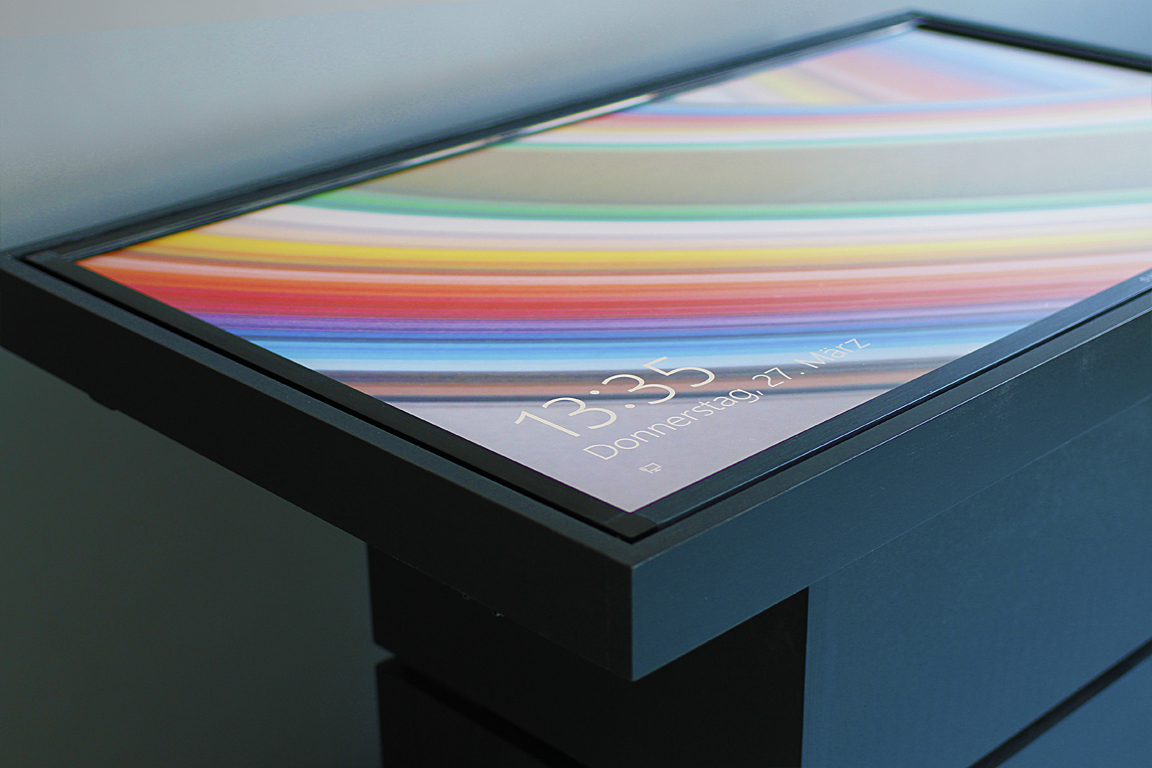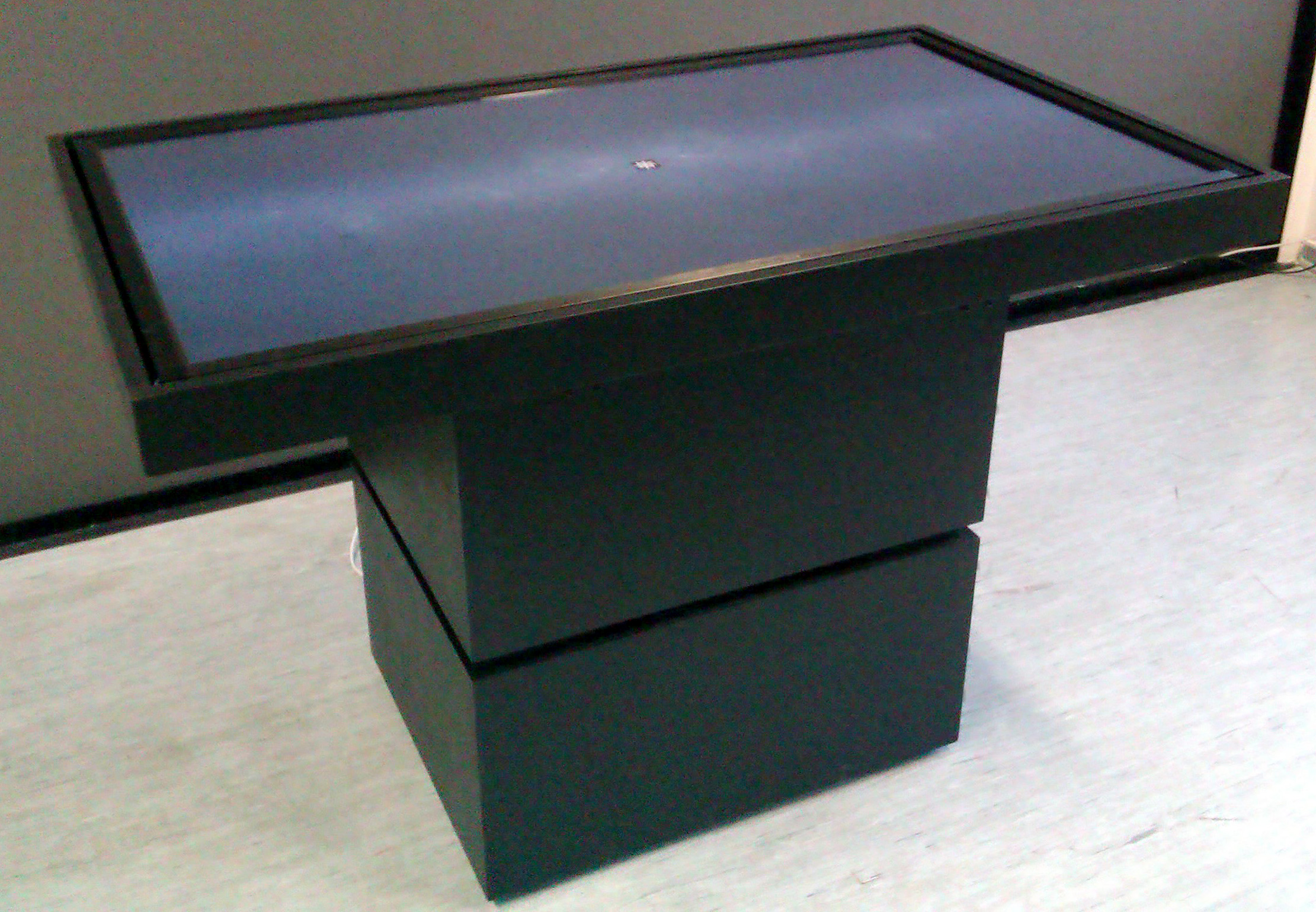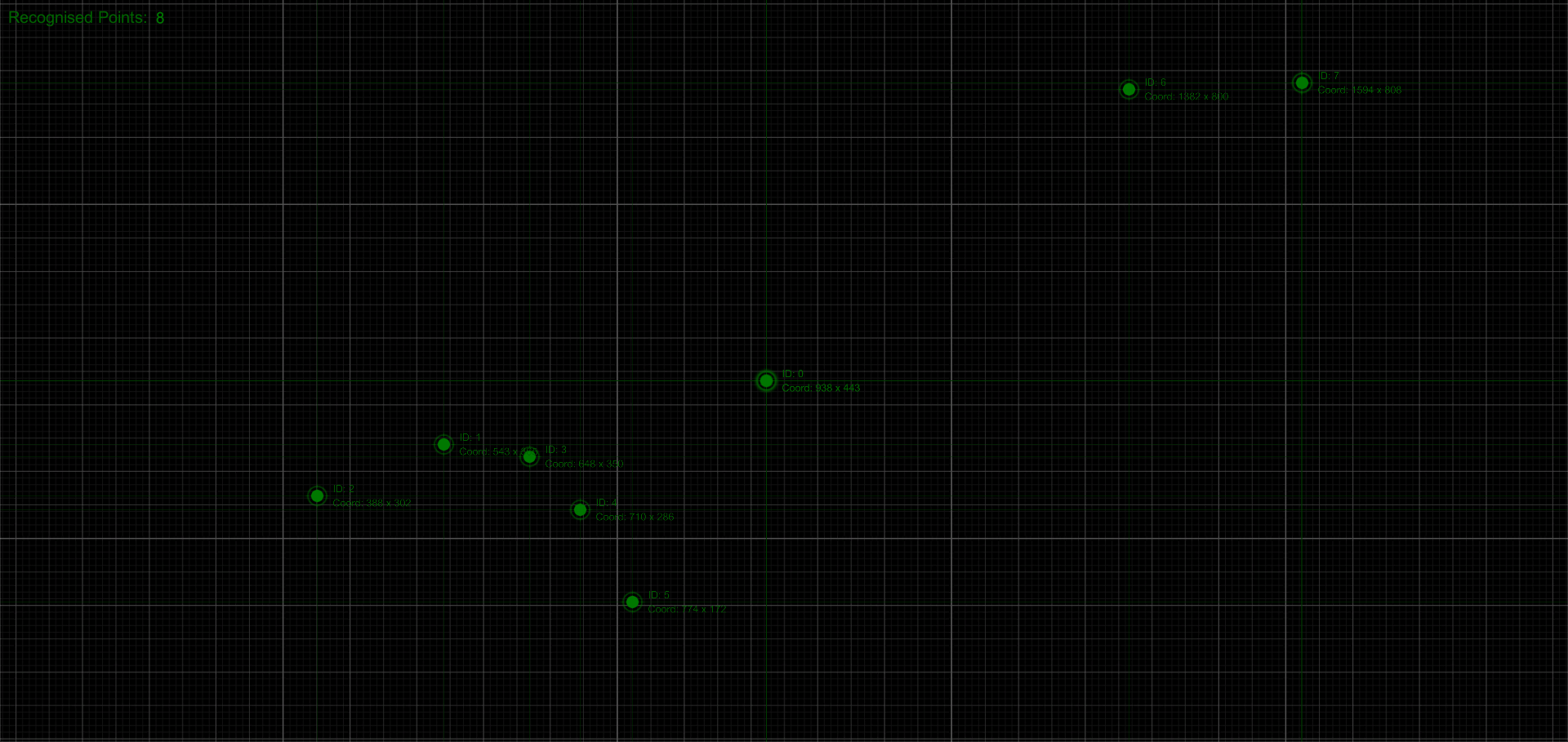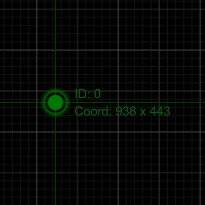Self-built TouchTable that offers good performance at a reasonable cost. Suitable for trade fairs and with a slim appearance.
| Facts | |
|---|---|
| Platform | PC |
| Engine | Unity3D |
| Release Date | April 30, 2014 |
Concept
We wanted to build a touch table ourselves that offers usable performance and is as inexpensive as possible. At the same time, it should be as suitable for trade fairs as possible and have a slim appearance. In order to keep the costs within reasonable limits, standard consumer hardware was used. This resulted in the following hardware being installed:
Hardware
- Display: Samsung UE55F6500 TV (4k)
- Touch: PQLabs G4S 55" IR-Frame
- Grafikkarte: NVIDIA GForce GTX780ti
- CPU: Intel i7-3770K
- RAM: 8GB
As it was to have a slim design, a construction using underbody projection and an optical tracking system was not an option. Therefore, the choice fell on a design with an infrared frame, which recognizes the touch interaction. WindowsTouch and TUIO are available as interfaces for the applications in order to receive the touch events.
An LCD TV was installed as the display, as it supports a high resolution (UHD 3840 × 2160). It also offers 3D functionality, which works using shutter technology. This enables further projects with 3D content, such as a fish tank. As an LCD TV was not designed for horizontal operation, it can lead to increased temperatures. To counteract this problem, a number of fans have been installed on the underside to provide additional support for air circulation. These are dynamically controlled by temperature sensors and do not cause any additional noise nuisance for users, as the volume does not exceed 40 dB. Furthermore, it has been found that this problem only occurs in continuous operation and is therefore easily manageable.
The housing was specially made for the TouchTable and consists mainly of wood and is designed to be very stable. It is therefore not a problem if it is subjected to punctual loads (e.g. leaned on by a user). In addition, the housing was designed to be modular in order to make it as versatile as possible. For this purpose, the housing was divided into three different modules, which can all be removed individually:
Modular Case
- Display module: Display with touch technology and additional ventilation
- Hardware module: Contains the computer components and is equipped with a lockable door
- Stand module: Additional storage space, which is equipped with a lockable door. Can be used e.g. for bags or exhibition flyers. Has castors for easy transportation.
The individual modules are connected to each other using a plug-in system and can therefore be varied as required. The heights are selected so that all three modules can be used comfortably while standing. When the stand module is removed, it results in a comfortable coffee table height to enable seated interaction. For vertical use, the display module can also be used on its own, but this requires the computer components of the hardware module to be housed externally.
Gameplay
The basic principle is a combination of platform game and lemming. Vikings is a two-dimensional platform game in which the player controls three different characters who can only reach the goal of the level if they work together. There are different items that can be used by the characters to reach the goal (e.g. a shield). In addition, care must always be taken not to run into enemies.
Impressions
Software
AppChooser
The AppChooser is an application that is used to select available applications and switch between them. It encapsulates the applications offered by the operating system and protects them from being accessed by the user. This creates a secure environment, e.g. to offer the TouchTable without support at trade fairs and still guarantee reliable operation.
The AppChooser can be configured to enable the greatest possible usability. Within this configuration, auxiliary programs, such as various web browsers for web applications, and environments for the applications can be defined. These environments are used to group the referenced applications and to load their data and start configuration. This separation into environments allows the stored applications to be quickly categorized and their availability to be determined. For example, the test environment cannot be displayed without a great deal of effort if a quick demonstration is required by customers.
The following data can be stored for the individual applications:
- Titel
- Icon
- Version
- Environment (Standalone, Browser)
- Executable
- Start parameters
There is also the option of inserting an “Exit button” above the application when it is executed. This is intended for applications that do not provide an independent exit functionality. This is required for web browser-related applications, for example.
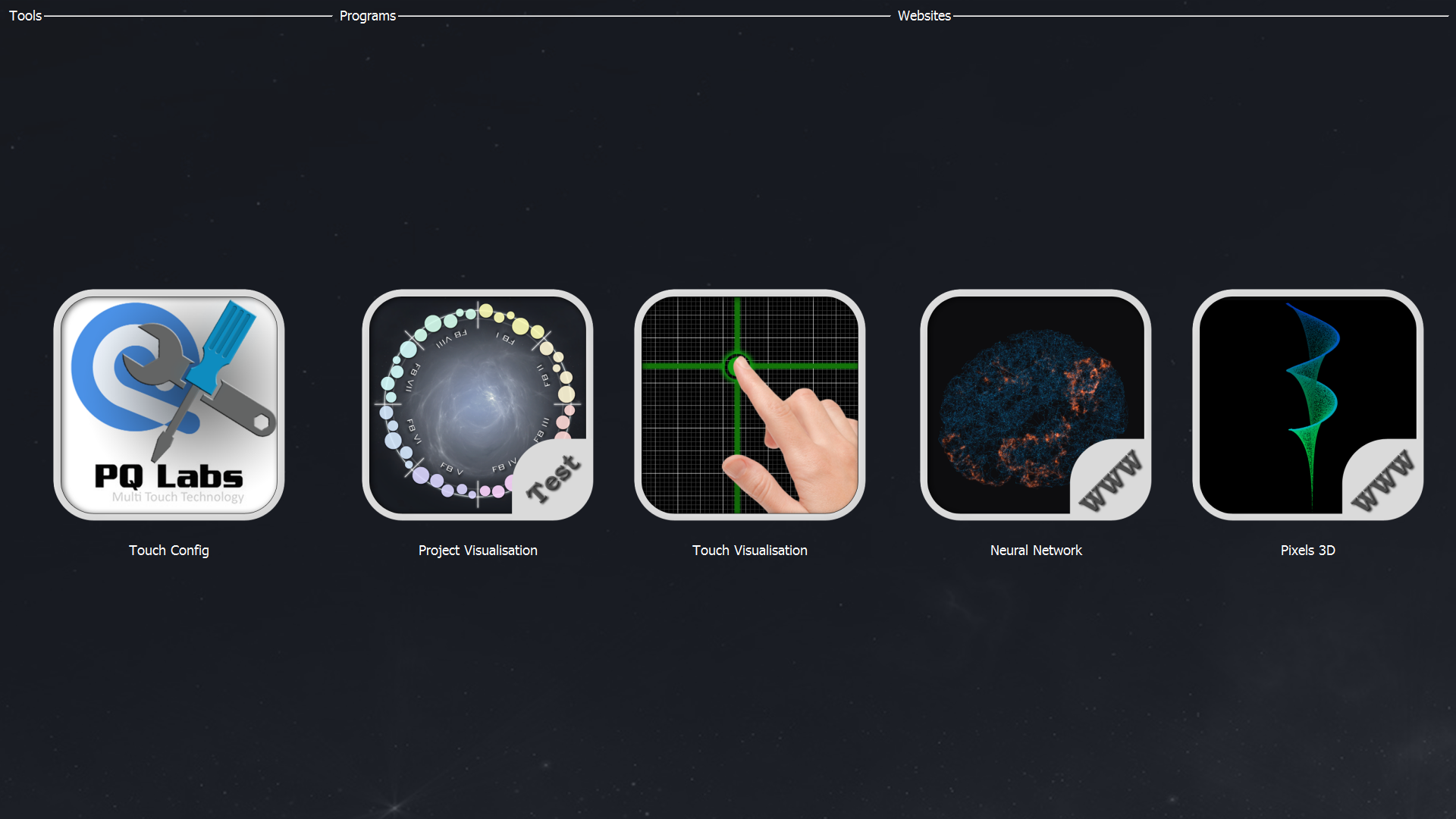
VisualTouch
This application visualizes the touch data provided by the system. This is mainly used for debugging and demonstrating touch recognition. It can be used to test the recognition of touch points and their processing speed. This helps to calibrate the touch hardware in terms of recognition in different lighting conditions or sensitivity.
